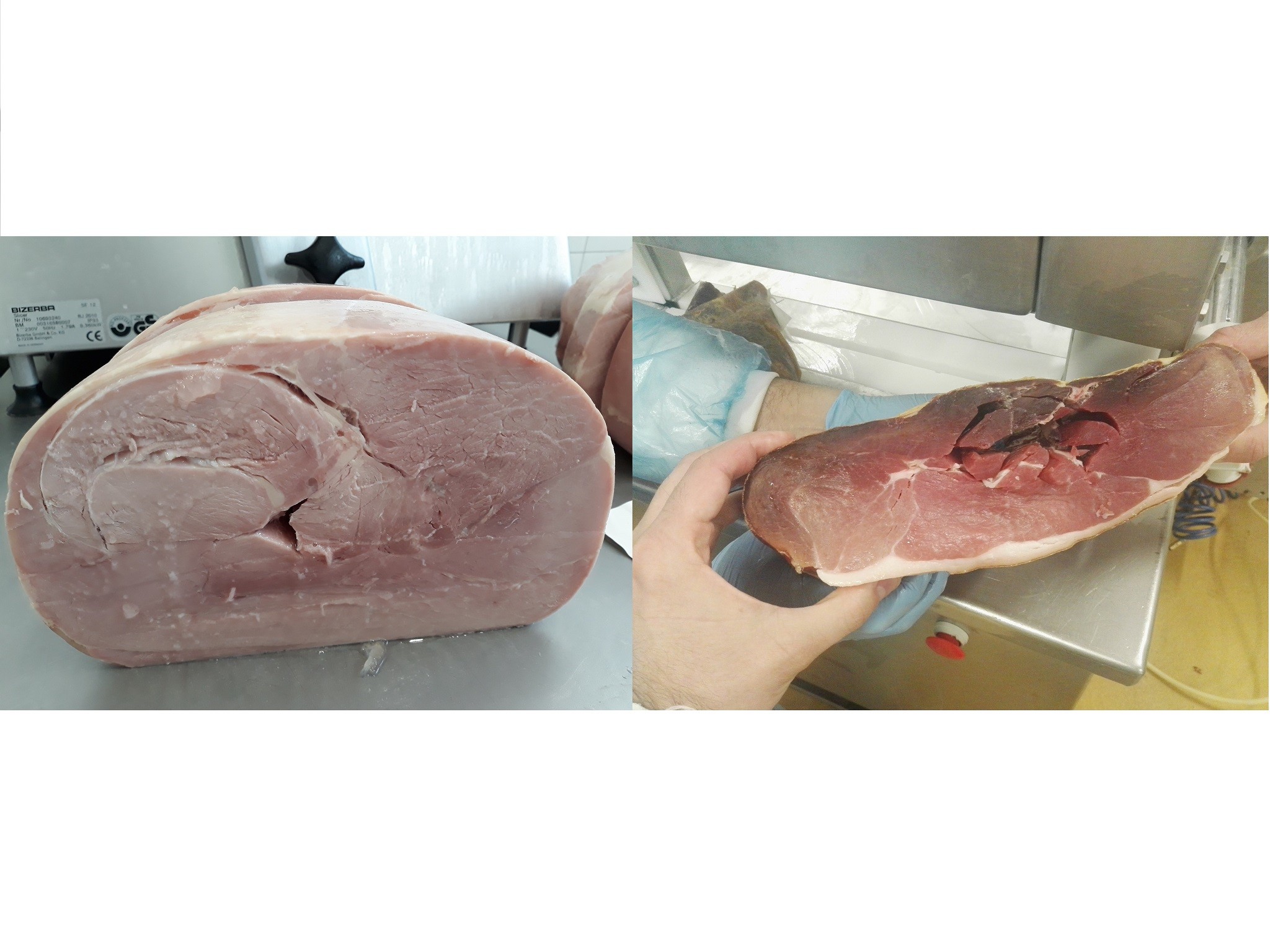SliceWatch: A new industrial solution to monitor meat quality and to reduce wasted and discarded meat
Meat quality embraces several meat attributes that jointly condition its flavour, colour and texture, as well as its adequacy to produce a specific product. Water Holding Capacity (WHC) is one of the most important pigmeat quality attributes, and relates to the capacity of the meat to retain water in their tissue structure. Abnormal WHC conditions the organoleptic properties of meat products, and has important technological implications. Meat with a too strong tendency to retain water is inadequate for producing cured products, due to the difficulty to ensure microbiological safety. Still, this type of meat is suitable for the production of certain meat products, such as cooked specialties. On the opposite side, excessively low WHC negatively affects flavour and texture of a wide variety of meat products (fresh, cured, and cooked). Moreover, it also leads to severe technological problems in the production of a wide variety of high value products , including textural defects, increased wasted meat, and excessive weigh loss during processing. While the incidence of meat with excessive WHC is moderate – below 0.5% – over the past years the incidence of meat with poor WHC has increased substantially. In Spain, we could confirm that the occurrence of poor quality meat with low WHC is above 30%, at several meat processing plants. Unfortunately, there is not a simple way to avoid or to reduce the magnitude of this problem, which arises from a variety of genetic factors, and pig management at the slaughterhouse. Meat processors thus seek solutions to detect low quality meat in their process to optimise the quality of their products. However, up to now the assessment of WHC in meat has been time consuming and complex, even using destructive laboratory techniques. The Spanish company Lenz Instruments S.L. has developed a solution (SliceWatch) to monitor WHC in meat in a fast and non-destructive way. It consists of a Magnetic Induction Scanner that integrates a conveyor belt to automatically feed in meat. As the meat part passes through, the scanner weighs and assesses the quality of the meat part in just a few seconds. The method relies on using a low intensity magnetic field to induce a current flow in the sample, and then measuring the magnitude of the induced currents at different excitation frequencies. Meat with excessive or too low WHC present a characteristic electrical response pattern, which is immediately identified by the data processing module of the scanner. SliceWatch is intended to be used in automatic meat reception lines to classify and separate meat into different categories, on a piece-by-piece basis. The control software allows categorizing each meat piece according to different classes, which can be defined by the user on the basis of the weight and WHC. The scanner has been designed to fulfil the requirements of the Industry 4.0 and can be interfaced with other smart sensors and machines. In particular, the same scanner can integrate additional sensors to determine the fat content of fresh meat, and the salt content of salted products. Annually, thousands of tons of meat are lost or wasted in Europe, during slicing operations. SliceWatch will contribute to reducing wasted meat by providing a means to separate meat with unsuitable WHC, which can still be used to elaborate other meat products with less restrictive requirements. SliceWatch solution will also reduce quality problems in the production cooked and dry-cured ham products, among others – development of holes, unpleasant texture, and poor taste. Moreover, SliceWatch will also contribute to grant the microbiological safety of dry-cured product, and to ensure a more homogeneous salt uptake by the product. The SliceWatch project has received funding from the European Union’s Horizon 2020 Research and Innovation programme under Grant Agreement No 711866.
Countries
Belgium, Germany, Denmark, Spain, France, Ireland, Italy, Netherlands, Poland, United Kingdom



